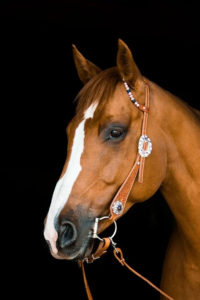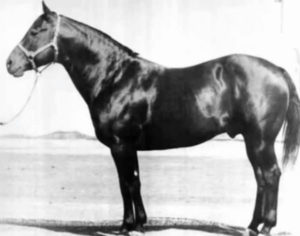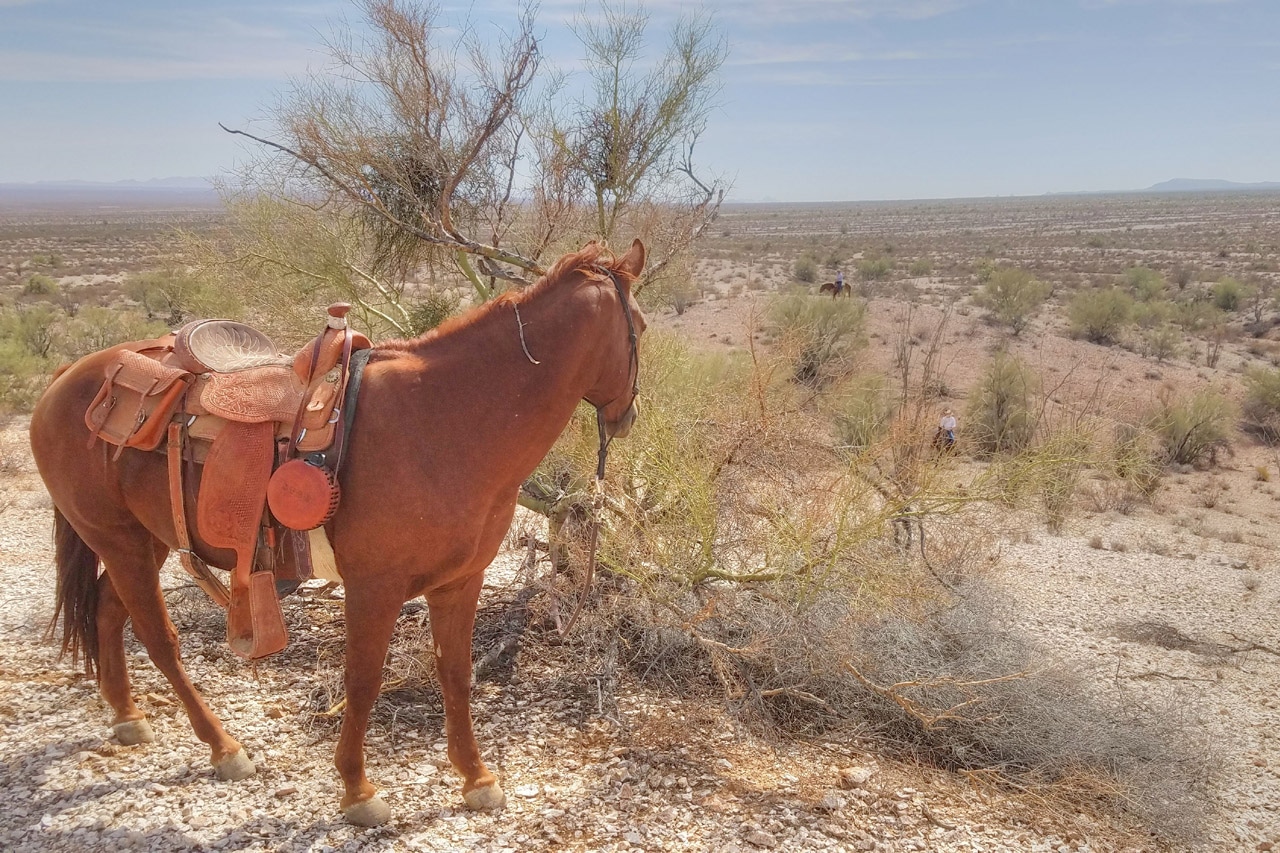There is no horse more widely known in the United States than the American Quarter Horse. Even more so, this is the dominant breed of cowboys and ranchers West of the Mississippi River. The Quarter Horse often has a broad chest, a well-defined jaw line, a fairly muscular body and very powerful hindquarters to top it all off. Needless to say, they are nearly perfect animals, and even more perfectly suited for the ranches and rodeos of the West. These are strong and powerful horses that can hold up in rugged terrain and mountain climbing. At the same time they are masters at becoming cutting horses and are great for cow work and barrel racing. Coming from someone who is a huge fan of Quarter Horses for all these reasons, you will see a lot of them on the ranch.

Typical quarter horse
Attributes
Beyond their physical attributes, they are also well-minded, and fit in here at the ranch very well. But the history of these animals is also what lends a fair amount of interest and legend surrounding them. They are descended from the original Spanish Horses and North African Barb Horses. These were brought over with the conquistadors in the 1500’s. This is also similar to the history of the Mustang. Where these two breeds diverge is the Mustang remained more of a wild/feral breed out West. Whereas the ancestors of the Quarter Horse became more domesticated and were breed by the Chickasaw Indians of Virginia. Later the British colonists and Americans took an interest in them. Ironically however, it is widely accepted that the final ingredient of the modern-day Quarter horse bloodlines and genetics was through that of the American Mustang. When crossed with some of the famous stallions from breeders in the mid-1800s, it created the perfect combination of an intelligent and well-mannered animal, with the impressive physical capabilities and raw stamina of a wild horse. Thus the modern American Quarter Horse as we know it today was born.

Quarter Horse
How the West was Tamed
Soon after word began to spread of this impressive new breed, the cattle ranchers and horse racers of Texas wanted to put these horses to the test. From that moment on, they became a staple of the Wild West. As cattle ranching expanded after the US Civil War into the great plains, so did the Quarter Horse. Throughout the whole period of the Old West from the 1870s to the 1900s, the Quarter Horse was there. It was chasing cows, chasing outlaws, and serving the iconic American Cowboy loyally and proudly. By 1940 the American Quarter Horse Association (AQHA) was formed to preserve the pedigrees and legacy of this breed. Today, there are over 3 million of these horses worldwide, and with an ever increasing fascination with the American West, hopefully there will be even more to come.

